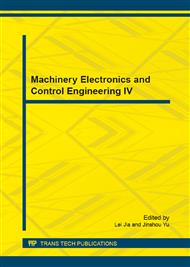[1]
K. Song, Design and fabrication of novel microfluidic systems for microsphere generation, Doctor of Philosophy, Biomedical Engineering University of Saskatchewan, Saskaton, (2011).
Google Scholar
[2]
M. Mbanjwa, K. Land, L. Jewell, and I. Gledhill, Experimental and numerical studies of emulsion formation in a microfluidic T-junction, presented at the AfriCOMP11: Second African Conference on Computational Mechanics, Cape Town, (2011).
Google Scholar
[3]
F. Ilnicki, P. Sobieszuk, and R. Pohorecki, Simulations of a two phase flow in a closed microchannel, Chemical and Process Engineering-Inzynieria Chemiczna I Procesowa, vol. 30, pp.205-216, (2009).
Google Scholar
[4]
D. Y. Qian and A. Lawal, Numerical study on gas and liquid slugs for Taylor flow in a T-junction microchannel, Chemical Engineering Science, vol. 61, pp.7609-7625, Dec (2006).
DOI: 10.1016/j.ces.2006.08.073
Google Scholar
[5]
S. Bashir, J. M. Rees, and W. B. Zimmerman, Simulations of microfluidic droplet formation using the two-phase level set method, Chemical Engineering Science, vol. 66, pp.4733-4741, Oct (2011).
DOI: 10.1016/j.ces.2011.06.034
Google Scholar
[6]
S. Arias, D. Legendre, and R. Gonzalez-Cinca, Numerical simulation of bubble generation in a T-junction, Computers & Fluids, vol. 56, pp.49-60, Mar (2012).
DOI: 10.1016/j.compfluid.2011.11.013
Google Scholar
[7]
Y. Liu and W. Z. Li, Numerical simulation on two-phase bubbly flow split in a branching T-junction, International Journal of Air-Conditioning and Refrigeration (IJACR), vol. 19, pp.253-262, (2011).
DOI: 10.1142/s2010132511000612
Google Scholar
[8]
S. Osher and J. A. Sethian, Fronts propagating with curvature-dependent speed: Algorithms based on Hamilton-Jacobi formulations, Journal of Computational Physics, vol. 79, pp.12-49, (1988).
DOI: 10.1016/0021-9991(88)90002-2
Google Scholar


